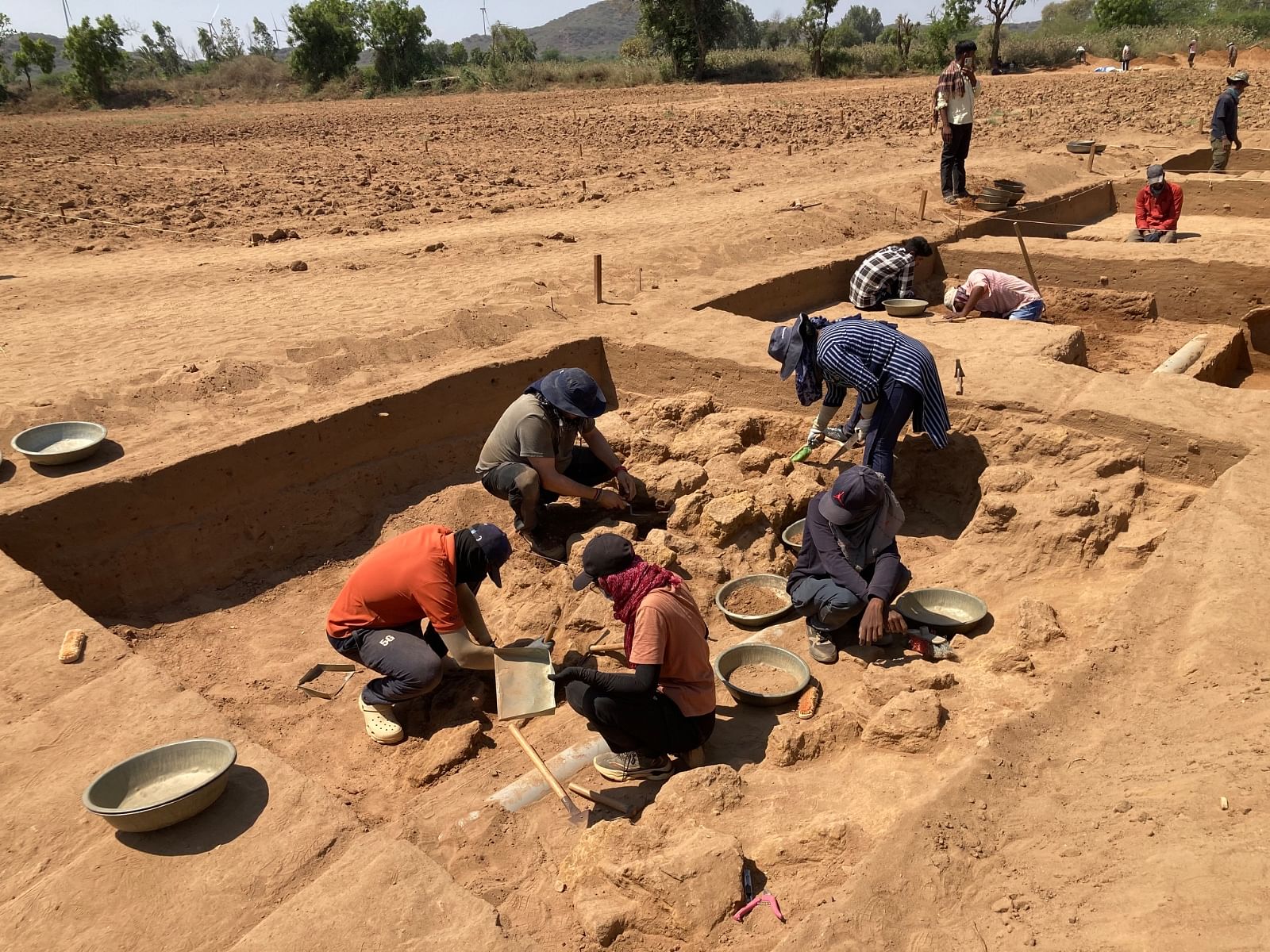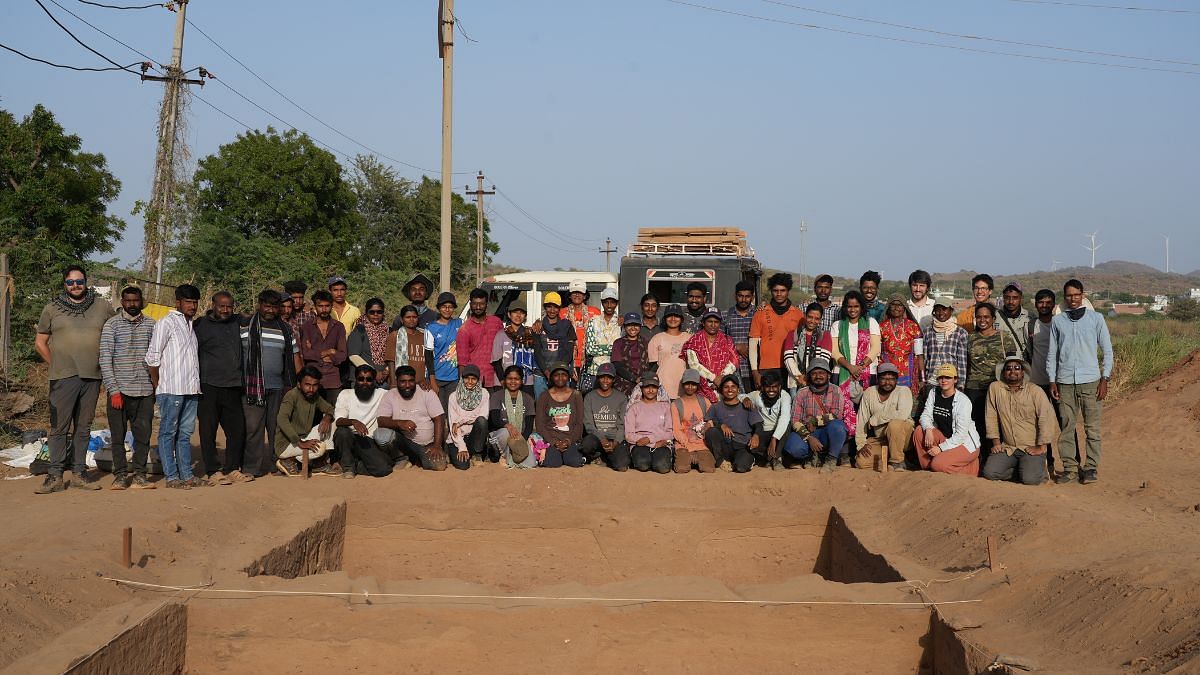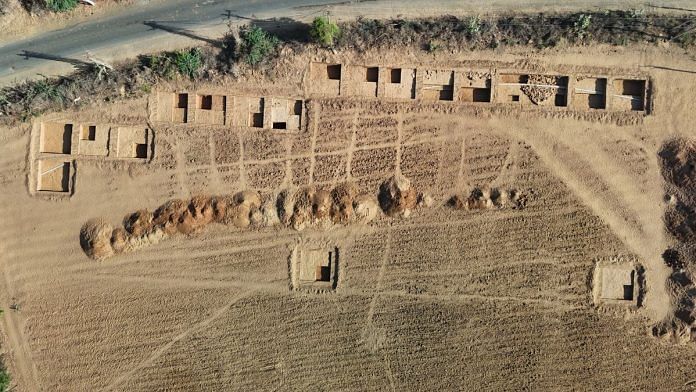In the last month, much of the media coverage around archaeological research in Gujarat has focused on dates. Various reports have announced the unearthing of 5,300–5,000-year-old settlements in Kutch by the University of Kerala. The emphasis, however, has been on the numbers rather than the archaeological depth of the research. In this flurry of numbers, we have ignored the actual significance of these excavations and the decades of scholarship and fieldwork they are built upon.
The truth is that the chronology of Gujarat’s ancient past is not a recent revelation. It is well-established in academia that prior to the rise of Harappan port towns and cities, indigenous societies had adapted to their environments and established their own cultural milieu.
Gujarat’s archaeological record shows that its history is long and non-linear. In this land, occupying the northeastern corner of western India, hunter-gatherers co-existed with agro-pastoralists and early copper users long before the rise and fall of Harappan culture. Against this background, the recent excavation at Lakhapar is significant not merely for the age of the findings, but for the evidence it offers about life, landscape, and cultural evolution.
These are not mere discoveries that revise timelines but ones that deepen our understanding. That is what deserves our attention. The real insight lies not in the numbers, but in the evidence brought to light by archaeologists.

Also read: Hunter-gatherers of Gujarat shared timeline with Harappans. History isn’t linear
Gujarat’s archaeological past
Gujarat is a region where the Kathiawad (Saurashtra) peninsula resembles “a caricatured head bending down the coastal plain, with its slender body supported by the Malwa plateau and Satpura Range.” This geographically diverse terrain has fostered a rich and complex archaeological landscape shaped by a long, complex trajectory of human occupation.
Since prehistoric times, early humans have inhabited this region, as evidenced by research undertaken by many scholars. Palaeolithic (Old Stone Age) imprints are marked by stone tools found along ancient rivers such as the Mahi and Sabarmati. As the region transitioned to the New Stone Age, sites like Langhnaj in north Gujarat offered a rare glimpse of Mesolithic foragers. Their geometric microlithic tools and evidence of hunting-gathering, combined with domestication and burial practices, signal a significant juncture in the adaptive history of western India.
This gradual transition towards domestication and sedentary life, evident by the 4th millennium BCE at sites like Prabhas Patan in Saurashtra, Padri near Somnath, and Loteshwar in north Gujarat. These sites reveal the rise of early agro-pastoralism, onset of metal (copper) use, distinctive regional ceramics, and continued microlith use. Sites such as Loteshwar and Rangpur are especially significant for showing a continuous cultural sequence from the Mesolithic to the Chalcolithic period.
By the 3rd millennium BCE, Gujarat saw the rise of urban Harappan centres, but with regional adaptations. Across Saurashtra and Kutch, the Sorath Harappan tradition was predominant. Sites like Lothal, Bagasra, and Dholavira developed as regional trade hubs specialising in crafts and maritime trade. Yet even as these urban centres rose, older lifeways persisted. Around 1900 BCE, when deurbanisation started, Gujarat saw the rise of regional centres and Late Harappan sites.
Such layered, nuanced history of continuity and change reveals a landscape of non-linear progression and co-existence. It requires us to look beyond mere dates. This is where the excavation at Lakhapar matters — it highlights not just the stratigraphy but adds a previously unexcavated layer to the archaeological landscape of Gujarat’s early history.
Also read: India’s archaeological site museums need major makeover. Vadnagar must set an example
Excavation at Lakhapar
The archaeological site at Lakhapar village in Kutch was identified in 2022 with the help of Narayanbhai Jajani, former sarpanch of Lakhapar, and later excavated by Abhayan GS and Rajesh SV of the Department of Archaeology, University of Kerala. The site was identified as Early Harappan (c. 3300-2600 BCE), and the excavation builds upon earlier work at the nearby Early Harappan cemetery at Juna Khatiya, excavated in 2019, 2020, and 2022 by the same team.
The Juna Khatiya excavation yielded around 197 burials. When combined with the findings at Lakhapar, they reinforce the idea of a broader network of interconnected Early Harappan settlements in this region. Excavators unearthed large stone structures, a human burial, and a plethora of pottery and artefacts. These structures, built using local sandstone and shale, indicate organised construction and systematic planning.

According to the archaeologists, the most significant discovery is the presence of pre-Prabhas pottery, named after the type-site Prabhas Patan in Saurashtra and also found at Datrana and Janan. This rare ceramic type, characterised by specific forms and fabrics, suggests interaction with regional Chalcolithic communities that co-existed in the region.
The human burial at Lakhapar, found within the habitation area, also included a pre-Prabhas pottery assemblage. Abhayan and Rajesh noted a considerable difference between this burial and those at Juna Khatiya: it lacked burial architecture or surface markers and was placed directly into a pit. This makes it the first burial in Gujarat with pre-Prabhas, Chalcolithic pottery linked to an Early Harappan site. Furthermore, a large portion of the habitation layers closely resembles Early Harappan Sindh-type settlements, as also seen at Juna Khatiya.
Such findings indicate cultural interactions, not only with co-existing early Chalcolithic groups, but also with Early Harappan cultures of Sindh, dated to around 3300 BCE, or roughly 5300 years ago.
Also read: How Gujarat spread Buddhism—Devnimori dig gives us a mahastupa, inscribed casket, coins
Cultural crossroads
A few years ago, Ajit Prasad of MSU Baroda excavated another Early Harappan burial site at Dhaneti in Kutch. It revealed multiple burials with grave goods and pottery — an important find, as distinct Early Harappan cemeteries are rare. Most Harappan burial data comes from the Classical or Mature Harappan phase. Therefore, sites like Dhaneti offer great insight into this early period before the onset of urbanism.
When Juna Khatiya and Lakhapar were being excavated, archaeologists expected to find similar antiquity. However, the evidence featuring an Early Harappan cemetery, habitation, and its cultural interaction with Chalcolithic groups was an even rarer find. What distinguishes them from other Early Harappan sites like Dhaneti is not the number of burials or their age, but their potential to reshape our understanding of how regional communities co-existed, interacted, and may have participated in the rise of the Indian Subcontinent’s first urban civilisation.
Disha Ahluwalia is an archaeologist and junior research fellow at the Indian Council Of Historical Research. She tweets @ahluwaliadisha. Views are personal.
(Edited by Prashant)






